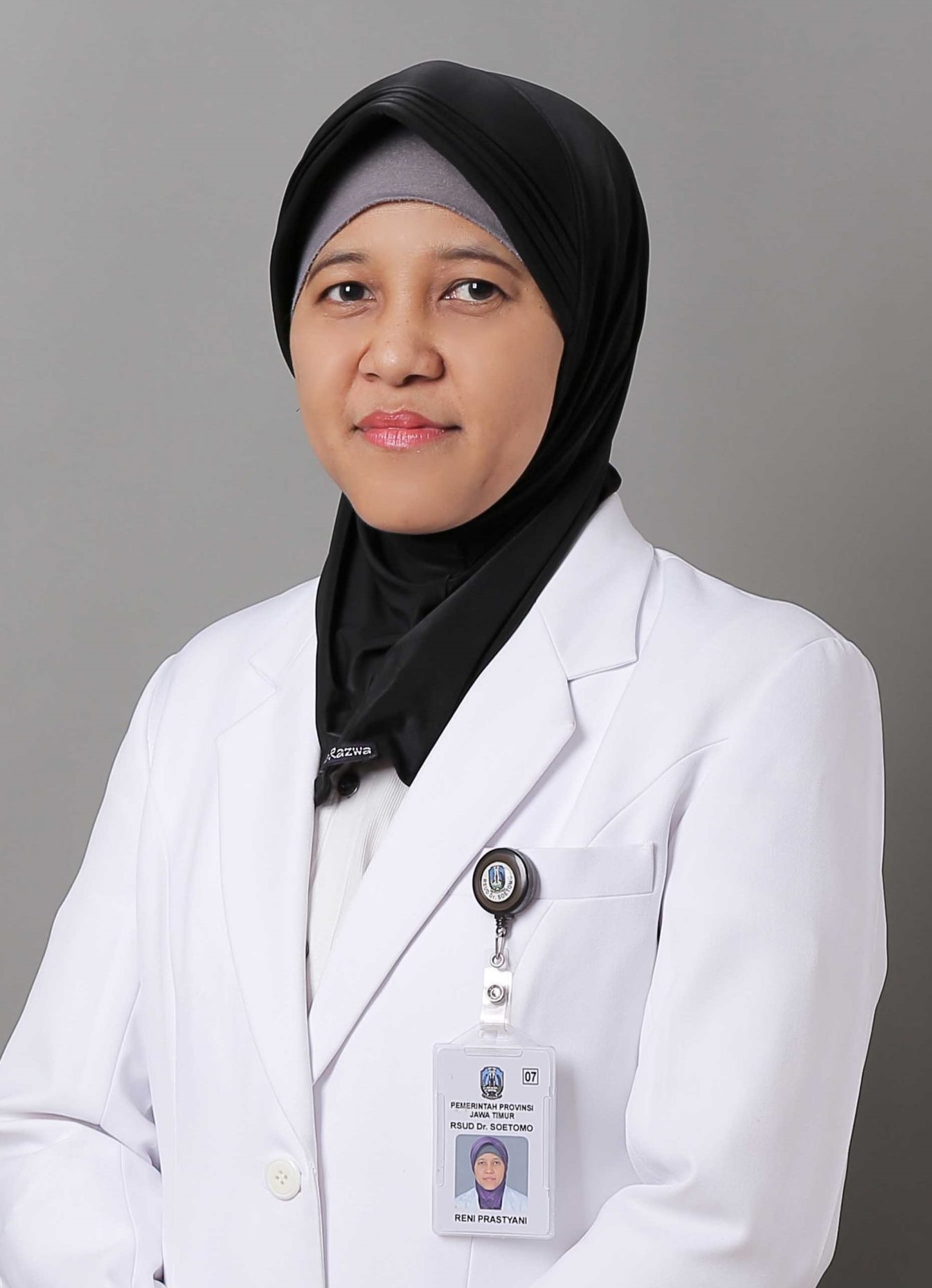Isolated Ectopia Lentis in Suspect of Weill-Marchesani Syndrome (WMS)
Downloads
Introduction: The prevalence of Weill-Marchesani syndrome (WMS) is estimated to be 1:100.000 proportion of the population. Knowledge of the clinical and therapy of WMS is expected to improve the ability to diagnose this disease. In this case report, we will present a case of WMS in a tertiary hospital because our findings are rare and essential concerning the symptomatic treatment and visual rehabilitation. Case Presentation: A 7-year-old child presented with blurred vision in the left eye. The patient showed an abnormal facial appearance with short stature and brachydactyly on both hands. The patient had a history of Intracapsular cataract extraction (ICCE) surgery on the right eye with an indication of anterior lens subluxation. The patient then suffered aphakic glaucoma in the right eye after surgery. Anterior segment examination of the right eye found an aphakic lens, conjunctival sclerectasia, atrophic iris, and mid-dilation pupil. Anterior segment of the left eye found an atrophic iris and lens subluxation. From the clinical appearance and the ocular disturbance, such as brachydactyly and short stature, the patient was diagnosed with suspected WMS. The patient was treated with ICCE surgery on the left eye and micropulse transscleral cyclophotocoagulation (MP-TSCPC) surgery on the right eye. Conclusion: WMS is a rare disease. It is essential to make an early diagnosis of glaucoma and ectopia lentis in WMS patients because it will affect their vision.
Guo H, Wu X, Cai K, Qiao Z. Weill-Marchesani syndrome with advanced glaucoma and corneal endothelial dysfunction: A case report and literature review. BMC Ophthalmol 2015;15:3. https://doi.org/10.1186/1471-2415-15-3.
Marzin P, Cormier-Daire V, Tsilou E. Weill-Marchesani Syndrome. GeneReviews® 2007. https://www.ncbi.nlm.nih.gov/books/NBK1114/ (accessed October 1, 2022).
Yi H, Zha X, Zhu Y, Lv J, Hu S, Kong Y, et al. A novel nonsense mutation in ADAMTS17 caused autosomal recessive inheritance Weill–Marchesani syndrome from a Chinese family. J Hum Genet 2019;64:681–687. https://doi.org/10.1038/s10038-019-0608-2.
Steinkellner H, Etzler J, Gogoll L, Neesen J, Stifter E, Brandau O, et al. Identification and molecular characterisation of a homozygous missense mutation in the ADAMTS10 gene in a patient with Weill-Marchesani syndrome. Eur J Hum Genet 2015;23:1186–1191. https://doi.org/10.1038/ejhg.2014.264.
Satana B, Altan C, Basarir B, Alkin Z, Yilmaz OF. A new combined surgical approach in a patient with microspherophakia and developmental iridocorneal angle anomaly. Nepal J Ophthalmol a Biannu Peer-Reviewed Acad J Nepal Ophthalmic Soc NEPJOPH 2015;7:85–89. https://doi.org/10.3126/nepjoph.v7i1.13178.
National Center for Health Statistics. Clinical Growth Charts. Centers Dis Control Prev 2009. https://www.cdc.gov/growthcharts/clinical_charts.htm#Set1 (accessed August 15, 2022).
Misra S, Parthasarathi G, Vilanilam GC. The effect of gabapentin premedication on postoperative nausea, vomiting, and pain in patients on preoperative dexamethasone undergoing craniotomy for intracranial tumors. J Neurosurg Anesthesiol 2013;25:386–391. https://doi.org/10.1097/ANA.0b013e31829327eb.
Akram H, Aragon-Martin JA, Chandra A. Marfan syndrome and the eye clinic: From diagnosis to management. Ther Adv Rare Dis 2021;2:26330040211055736. https://doi.org/10.1177/26330040211055738.
Sahay P, Maharana PK, Shaikh N, Goel S, Sinha R, Agarwal T, et al. Intra-lenticular lens aspiration in paediatric cases with anterior dislocation of lens. Eye (Lond) 2019;33:1411–1417. https://doi.org/10.1038/s41433-019-0426-y.
Vasavada AR, Praveen MR, Desai C. Management of bilateral anterior dislocation of a lens in a child with Marfan's syndrome. J Cataract Refract Surg 2003;29:609–613. https://doi.org/10.1016/s0886-3350(02)01529-8.
Nihalani BR, Vanderveen DK. Secondary intraocular lens implantation after pediatric aphakia. J AAPOS Off Publ Am Assoc Pediatr Ophthalmol Strabismus 2011;15:435–440. https://doi.org/10.1016/j.jaapos.2011.05.019.
Deng D, Li J, Yu M. Postoperative Visual Rehabilitation in Children with Lens Diseases BT. In: Liu Y, editor. Pediatric Lens Diseases. Singapore: Springer Singapore; 2017, p. 353–369. https://doi.org/10.1007/978-981-10-2627-0_26.
Baradaran-Rafii A, Shirzadeh E, Eslani M, Akbari M. Optical correction of aphakia in children. J Ophthalmic Vis Res 2014;9:71–82.
Repka MX. Visual Rehabilitation in Pediatric Aphakia. Dev Ophthalmol 2016;57:49–68. https://doi.org/10.1159/000442501.
Landry DW, Oliver JA. The pathogenesis of vasodilatory shock. N Engl J Med 2001;345:588–595. https://doi.org/10.1056/NEJMra002709.
Ndulue JK, Rahmatnejad K, Sanvicente C, Wizov SS, Moster MR. Evolution of Cyclophotocoagulation. J Ophthalmic Vis Res 2018;13:55–61.
Tan AM, Chockalingam M, Aquino MC, Lim ZI-L, See JL-S, Chew PT. Micropulse transscleral diode laser cyclophotocoagulation in the treatment of refractory glaucoma. Clin Experiment Ophthalmol 2010;38:266–272. https://doi.org/10.1111/j.1442-9071.2010.02238.x.
Lee JH, Shi Y, Amoozgar B, Aderman C, De Alba Campomanes A, Lin S, et al. Outcome of micropulse laser transscleral cyclophotocoagulation on pediatric versus adult glaucoma patients. J Glaucoma 2017;26:936–939. https://doi.org/10.1097/IJG.0000000000000757.
Emanuel ME, Grover DS, Fellman RL, Godfrey DG, Smith O, Butler MR, et al. Micropulse cyclophotocoagulation: Initial results in refractory glaucoma. J Glaucoma 2017;26:726–729. https://doi.org/10.1097/IJG.0000000000000715.
Trivedi RH, Wilson MEJ, Facciani J. Secondary intraocular lens implantation for pediatric aphakia. J AAPOS Off Publ Am Assoc Pediatr Ophthalmol Strabismus 2005;9:346–352. https://doi.org/10.1016/j.jaapos.2005.02.010.
Wood KS, Tadros D, Trivedi RH, Wilson ME. Secondary intraocular lens implantation following infantile cataract surgery: intraoperative indications, postoperative outcomes. Eye (Lond) 2016;30:1182–1186. https://doi.org/10.1038/eye.2016.131.
Turlapati N, Salim S. Aphakic and Pseudophakic Glaucoma After Congenital Cataract Surgery. Eyenet Mag 2015. https://www.aao.org/eyenet/article/aphakic-pseudophakic-glaucoma-after-congenital-cat (accessed October 13, 2022).
Copyright (c) 2022 Priya Taufiq Arrachman, Ega Sekartika, Mutia Khanza, Dewi Rosarina, Dini Dharmawidiarini, Muhammad Hanun Mahyuddin

This work is licensed under a Creative Commons Attribution-ShareAlike 4.0 International License.
Vision Science and Eye Health Journal by Universitas Airlangga is licensed under a Creative Commons Attribution-ShareAlike 4.0 International License.
The journal allows the author to hold the copyright of the article without restrictions.
The journal allows the author(s) to retain publishing rights without restrictions.
The legal formal aspect of journal publication accessibility refers to Creative Commons Attribution-Share-Alike (CC BY-SA).
The Creative Commons Attribution-Share-Alike (CC BY-SA) license allows re-distribution and re-use of a licensed work on the conditions that the creator is appropriately credited and that any derivative work is made available under "the same, similar or a compatible license”. Other than the conditions mentioned above, the editorial board is not responsible for copyright violations.



















